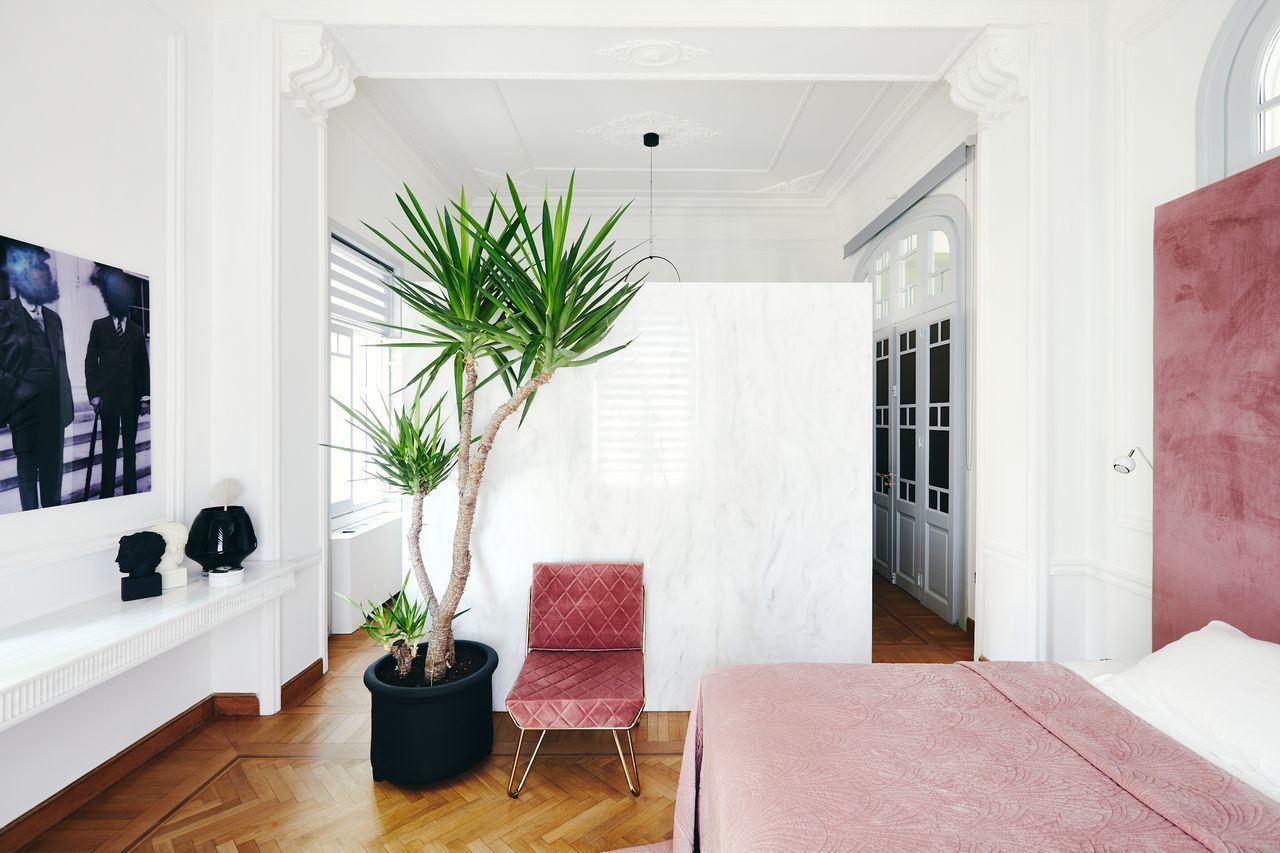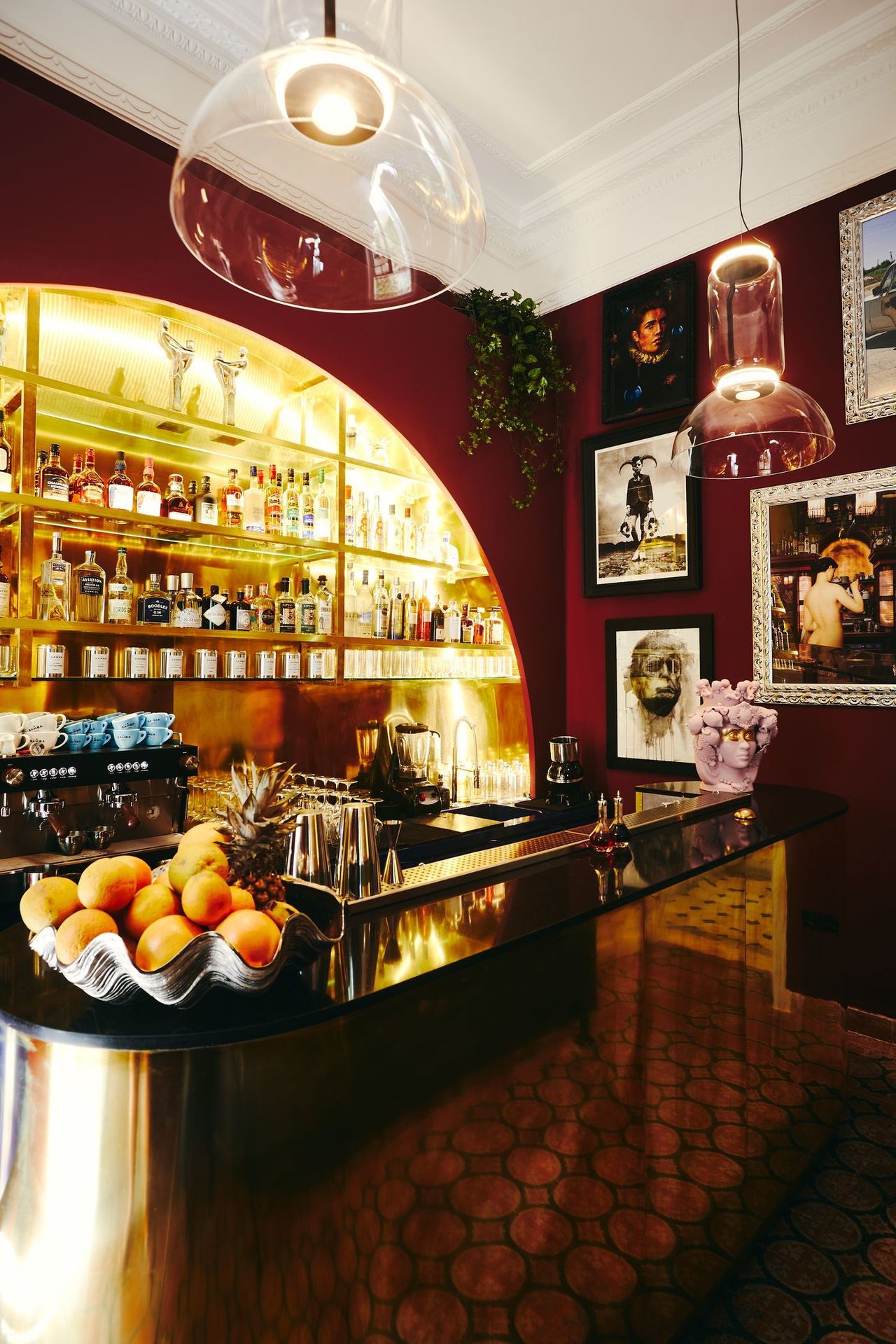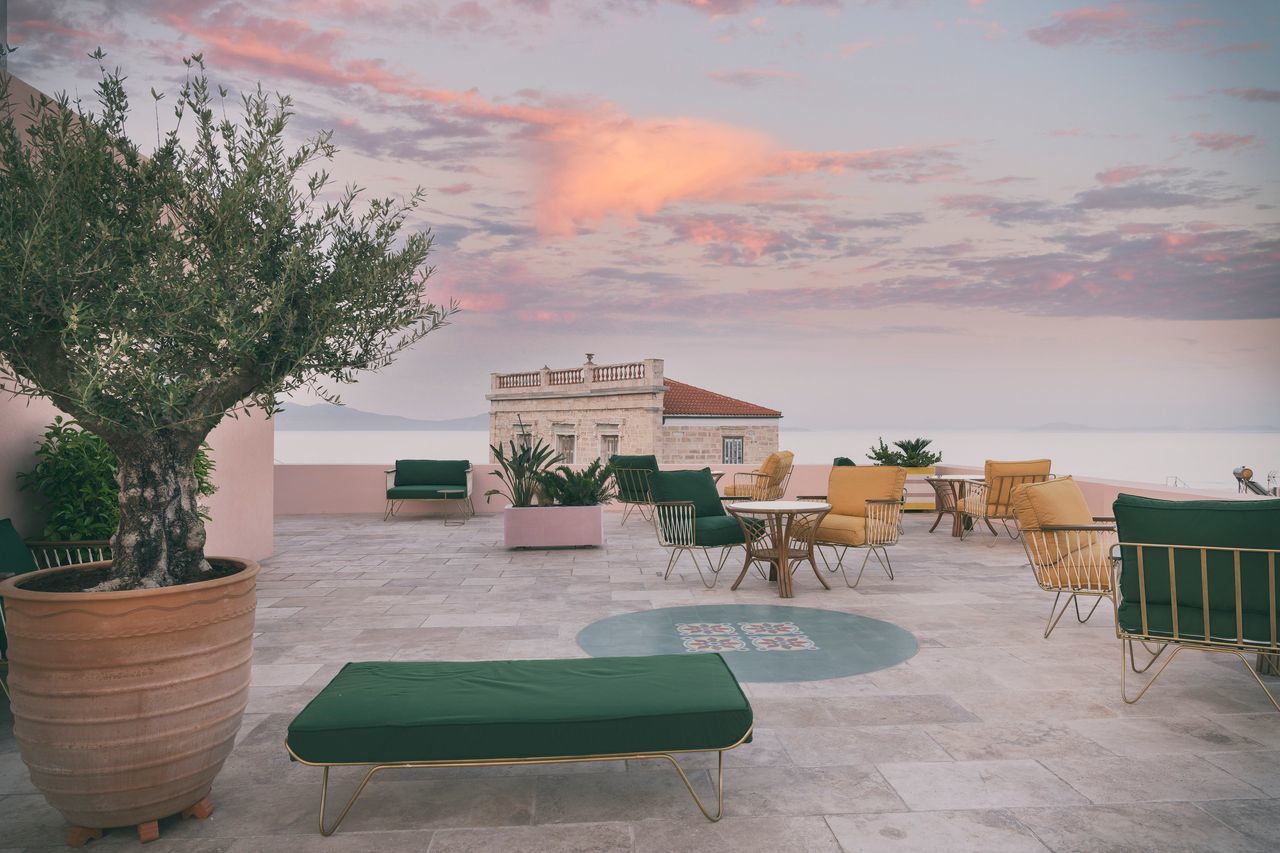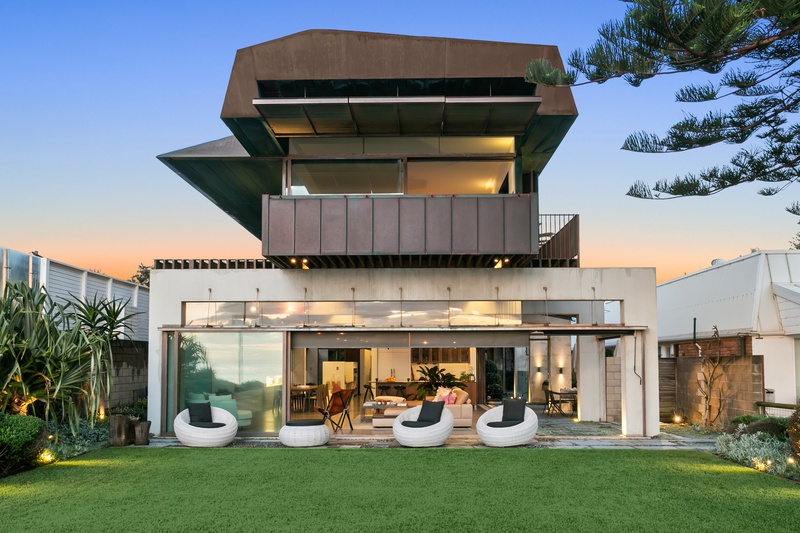Greek Mansion With Roof Deck Overlooking the Aegean Sea Lists for €6.5 Million
A Greek retreat with a rooftop pool and terrace has hit the market for €6.5 million (US$6.989 million).
Known as Andromeda, the mansion is located in the neighbourhood of Vaporia in Ermoupolis, the historic capital of Syros island, about a four-hour car and ferry trip from Athens. It offers just over 5,000 square feet and far-reaching views of the Aegean Sea, according to the listing with Greece Sotheby’s International Realty.
The design breaks free from the white-and-royal blue color scheme Greece is known for, instead featuring a pink facade and teal, amber, lemon and pink interiors. There are also herringbone wood floors and arched glass doorways.

“We fell in love with this very special house, one of the last neoclassical mansions to be built in Greece,” co-owner and author Oana Aristide said in an email. “The island itself looks more Venetian than Cycladic, and its century of glory is rooted in cosmopolitan, modern ambition. We therefore kept the generous spaces and original architectural details but combined it with iconic contemporary design elements. The goal was a fresh 21st century take on old-world elegance.”
Indeed, the home “is all about Old World elegance, where Greek neoclassical and Art Deco accents grace this imposing property,” Despina Laou of Greece Sotheby’s International Realty said in the listing.
A marble staircase with Doric columns on the upper level at the center of the mansion, and there are high, decorative ceilings throughout, the listing said. There’s also a wet bar with a dark red wall and a circular bar shelf.
There are 10 en-suite bedrooms, with marble accents in the bathrooms, and “outdoor plunge pools and private verandas with expansive sea views of the nearby islands of Mykonos and Tinos extend off some of the rooms,” the listing said. The home has most recently been used as a hotel.

A highlight of the home is undoubtedly the roof deck, where guests and residents can take in sunrises and sunsets while lounging poolside.
Vaporia, once populated with the island’s shipowners and industrialists, is within walking distance of the charming historic port, home to Greece’s first opera house dating to 1864, according to the listing. Beaches and waterfront dining are a short drive away, as are other island villages.
Mansion Global could not determine when the home last traded, or for how much. The owners did not immediately return a request for comment.
 Copyright 2020, Dow Jones & Company, Inc. All Rights Reserved Worldwide. LEARN MORE
Copyright 2020, Dow Jones & Company, Inc. All Rights Reserved Worldwide. LEARN MORE
Records keep falling in 2025 as harbourfront, beachfront and blue-chip estates crowd the top of the market.
A divide has opened in the tech job market between those with artificial-intelligence skills and everyone else.
The 2026 McGrath Report warns that without urgent reforms to planning, infrastructure and construction, housing affordability will continue to slip beyond reach for most Australians.
Australia’s housing market has reached a critical juncture, with home ownership and rental affordability deteriorating to their worst levels in decades, according to the McGrath Report 2026.
The annual analysis from real estate entrepreneur John McGrath paints a sobering picture of a nation where even the “lucky country” has run out of luck — or at least, out of homes.
New borrowers are now spending half their household income servicing loans, while renters are devoting one-third of their earnings to rent.
The time needed to save a 20 per cent deposit has stretched beyond ten years, and the home price-to-income ratio has climbed to eight times. “These aren’t just statistics,” McGrath writes. “They represent real people and real pain.”
McGrath argues that the root cause of Australia’s housing crisis is not a shortage of land, but a shortage of accessibility and deliverable stock.
“Over half our population has squeezed into just three cities, creating price pressure and rising density in Sydney, Melbourne and Brisbane while vast developable land sits disconnected from essential infrastructure,” he says.
The report identifies three faltering pillars — supply, affordability and construction viability — as the drivers of instability in the current market.
Developers across the country, McGrath notes, are “unable to make the numbers work” due to labour shortages and soaring construction costs.
In many trades, shortages have doubled or tripled, and build costs have surged by more than 30 per cent, stalling thousands of projects.
Need for systemic reform
McGrath’s prescription is clear: the only real solution lies in increasing supply through systemic reform. “We need to streamline development processes, reduce approval timeframes and provide better infrastructure to free up the options and provide more choice for everyone on where they live,” he says.
The 2026 edition of the report also points to promising trends in policy and innovation. Across several states, governments are prioritising higher-density development near transport hubs and repurposing government-owned land with existing infrastructure.
Build-to-rent models are expanding, and planning reforms are gaining traction. McGrath notes that while these steps are encouraging, they must be accelerated and supported by new construction methods if Australia is to meet demand.
One of the report’s key opportunities lies in prefabrication and modular design. “Prefabricated homes can be completed in 10–12 weeks compared to 18 months for a traditional house, saving time and money for everyone involved,” McGrath says.
The report suggests that modular and 3D-printed housing could play a significant role in addressing shortages while setting a new global benchmark for speed, cost and quality in residential construction.
Intelligent homes
In a section titled Weathering the Future: The Power of Smart Design, the report emphasises that sustainable and intelligent home design is no longer aspirational but essential.
It highlights new technologies that reduce energy use, improve thermal efficiency, and make homes more resilient to climate risks.
“There’s no reason why Australia shouldn’t be a world leader in innovative design and construction — and many reasons why we should be,” McGrath writes.
Despite the challenges, the tone of the 2026 McGrath Report is one of cautious optimism. Demand is expected to stabilise at around 175,000 households per year from 2026, and construction cost growth is finally slowing. Governments are also showing a greater willingness to reform outdated planning frameworks.
McGrath concludes that the path forward requires bold decisions and collaboration between all levels of government and industry.
“Australia has the land, demand and capability,” he says. “What we need now is the will to implement supply-focused solutions that address root causes rather than symptoms.”
“Only then,” he adds, “can we turn the dream of home ownership back into something more than a dream.”
From Italy’s $93,000-a-night villas to a $20,000 Bowral château, a new global ranking showcases the priciest Airbnbs available in 2026.
ABC Bullion has launched a pioneering investment product that allows Australians to draw regular cashflow from their precious metal holdings.























